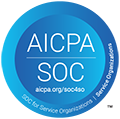2019 MSP Compliance issues
Medicare Secondary Payer policies and processes are always in flux, whether CMS tweaks what is included or excluded in the MSA or introduces a new contractor who brings their own take on MSA reviews or Medicare conditional payment recovery. Below we take a look at changes in the past 12 months to MSAs and conditional payments. We also explain Tower’s advocacy initiatives and highlight key benchmarks for MSA approvals over the past year.
Workers’ Compensation Medicare Set-Asides
The big news in the WCMSA world was the introduction of a new WCMSA review contractor, Capitol Bridge, in March 2018. Unlike with prior review contractor changes, turnaround times for MSA review only increased slightly and have generally remained within the 20 business days required under the CMS contract.
Although CMS advised that the contractor change would not involve any policy changes, there were changes to the allocation of care. First, CMS began to include four urine drug screens (UDS) each year when a Schedule II substance, such as Norco, is allocated in the MSA. This applies even when there was no past history of such screens or there was a past history but UDS occurred less frequently (Note, recent CMS MSA approvals reveal CMS may have rescinded this policy). Second, CMS expanded the diagnoses for Lyrica use, Medicare coverage and allocation in the MSA. Since Lyrica is only available in brand-name, this has led to some significant increases to MSA allocations.
Challenging CMS
Tower leaves no stone unturned when identifying opportunities to reduce the MSA during the CMS review and approval process. We have challenged CMS about its inclusion of unwarranted UDS and its expansion of Lyrica coverage in the MSA. In 2018 Tower had a 71% success rate in obtaining partial or full reductions to CMS MSA counter-highers. In one case, Tower successfully challenged the inclusion of a revision total shoulder replacement given the life expectancy, resulting in a reduction of $31,801.
Tower also doesn’t let CMS go on minor, yet unwarranted, MSA increases. In another example, we disputed the increase in post-op PT visits from 24 to 36. CMS agreed and reduced PT visits back down to 24.
Our ability to challenge CMS often comes from having clear and concise medical documentation to support our MSA proposal. Tower’s Physician Follow-Up service obtains statements from treating physicians and other medical providers that document last dates of service, discontinued and ongoing medications and otherwise clarify expectations for future injury-related medical care. Tower provides this service free to our clients for the purpose of expediting the CMS MSA approval process, identifying and implementing MSA cost reductions and avoiding MSA counter-highers.
Medicare Conditional Payments
Performant Recovery became the new Commercial Repayment Center (CRC) contractor in February 2018. The CRC is primarily charged with seeking reimbursement for conditional payments from employers and insurers stemming from liability, workers’ compensation and no-fault claims where ongoing responsibility for medicals has been accepted.
In general, having Performant as the CRC contractor reduced turnaround times to obtain Medicare conditional payment information. While we applaud the quick turnaround time on conditional payment data, the dispute and appeal process has been inconsistent, with some cases falling within a 60-day timeframe, while receiving a determination from the CRC took many months in other cases.
We understand that Performant inherited a backlog of cases from the prior contractor a year ago. However, we would expect that backlog to be resolved by now and that turnaround times for cases being handled would have stabilized.
Tower as an Industry Leader
Tower’s CEO Rita Wilson served as the 2018 president of NAMSAP where she led implementation efforts for a number of strategic initiatives to advance its mission to advocate, collaborate and educate within the MSP industry. Key accomplishments included the release of the industry’s most comprehensive course for MSCC pre-certification, discounted subscription to ODG, the nation’s top resource for clinical guidelines to improve MSA accuracy drive toward evidence-based medicine, and, most importantly, a significant increase in NAMSAP’s influence on CMS’s WCMSA review policies. Here are a few highlights:
- Submitted a formal proposal to CMS with recommendations for use of evidence-based guidelines in its WCMSA review process for MSAs that allocate for long-term use of opioids. CMS has agreed to work with NAMSAP’s evidence-based medicine leadership as it considers changes.
- Submitted recommendations for CMS Liability MSA review process and was invited to engage. CMS in further dialogue.
- Initiated a quarterly conference call with CMS to continue discussion of MSP issues. The first call was Dec. 18, 2018. While CMS’s review of some items continues, NAMSAP was successful in obtaining clarity regarding the inclusion of Lyrica in the MSA, and in aligning the use of urine drug screens (UDS) with current prescribing practices when Class II narcotics are included in the MSA.
- Secured commitments from CMS and its contractors to present at the 2019 annual meeting
The 2019 Board of Directors, which includes me as treasurer and a member of NAMSAP’s Executive Committee, will continue its collaboration with CMS in an effort to further influence CMS’s behavior and to improve the accuracy of the MSA work product.
Tower and You
As we pressed forward to influence CMS and support our industry, Tower also continued its mission to achieve better outcomes for our clients through an improved technology infrastructure that supports better measurement of the key metrics that drive our business. While WC agrees that pharmacy is a key cost driver in the MSA, few are measuring the inclusion, cost and CMS approval rating for drugs, specifically opioids, in the MSA. Tower has benchmarked these metrics for more than 3 years, and in early 2019, will release a new set of performance reports to our clients to provide benchmarked performance data for these key performance metrics.
As noted many times by our CEO, “You cannot manage/improve what you do not measure” During the past year, we saw:
- CMS Approved MSAs with NO prescription drugs – 64%
- CMS Approved MSAs with NO opioids – 90%
- CMS Full Approval Rating – 77%
- CMS Re-Review Success Rate – 73%
- MSA Cost Savings from Clinical Intervention 61.4%
Employers and carriers have to dissect mega volumes of claims and vendor data – then try to aggregate it into a simple, usable format to gauge their programs’ success. Want to find out your MSA numbers? We will help you understand the metrics you need to optimize your MSP compliance and MSA programs – call Dan Anders at (888) 331-4941.











